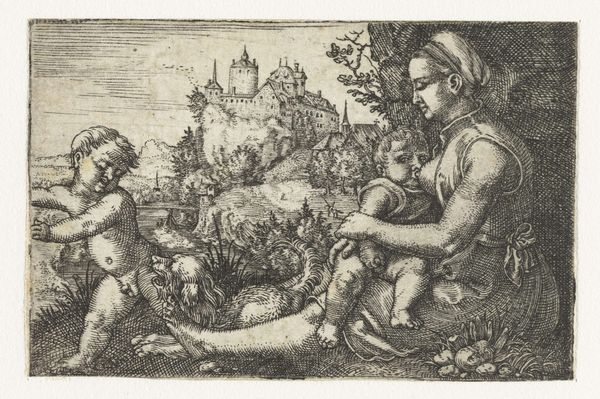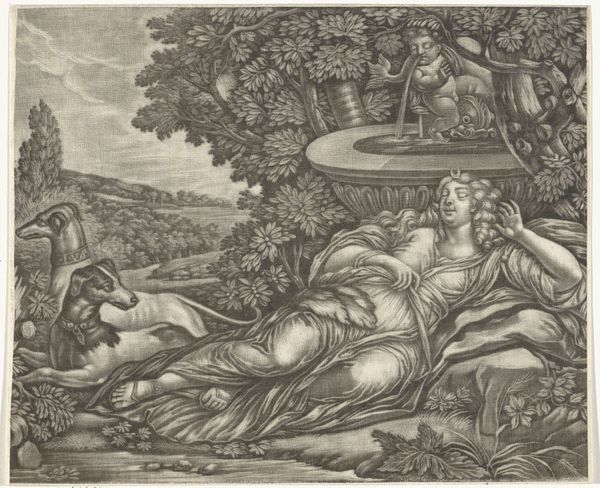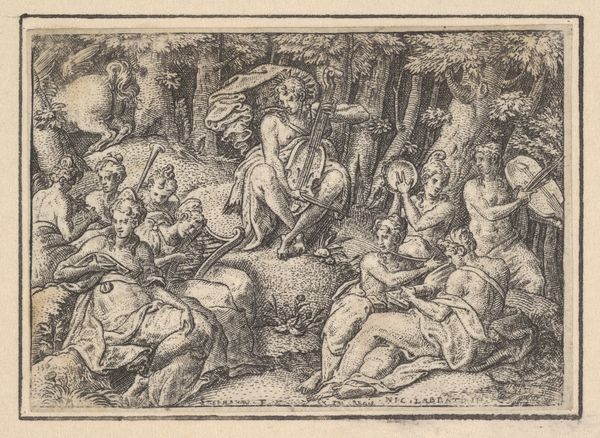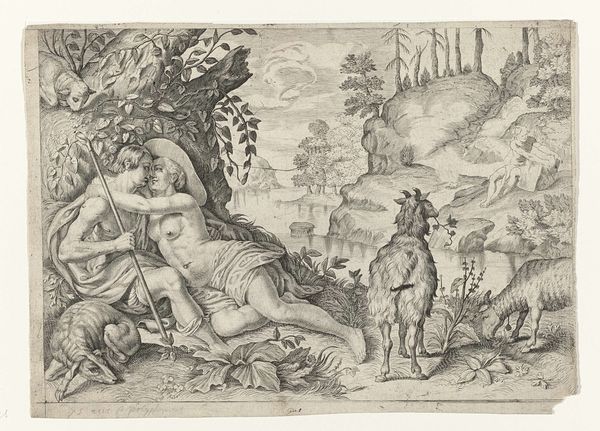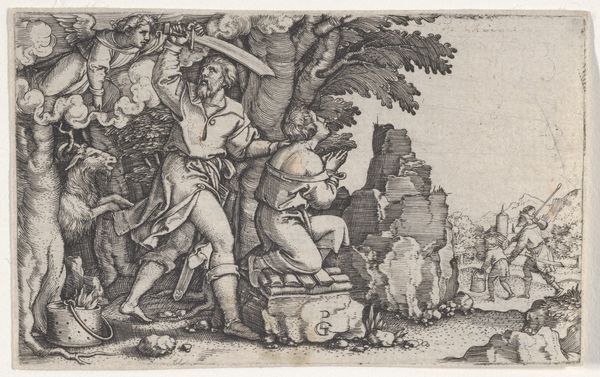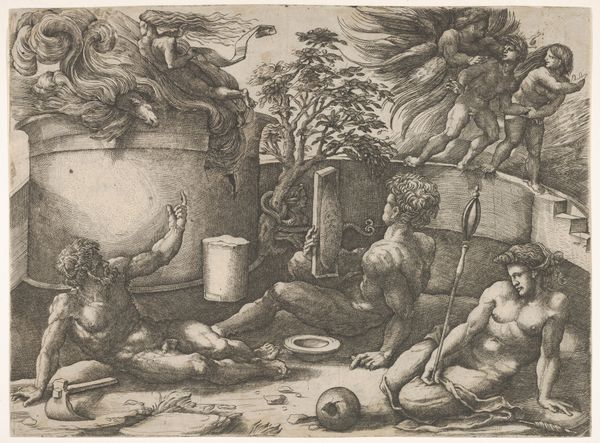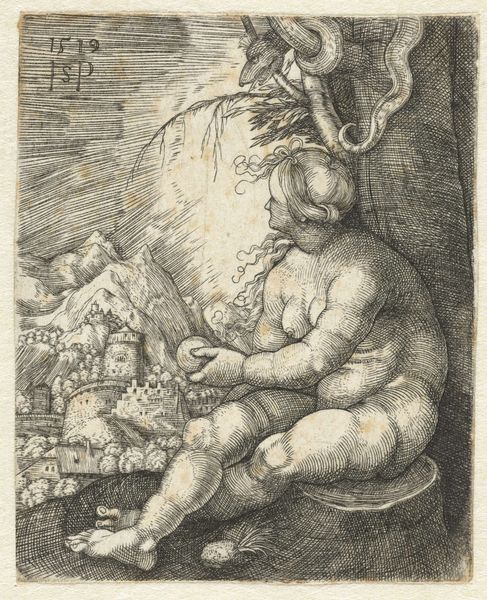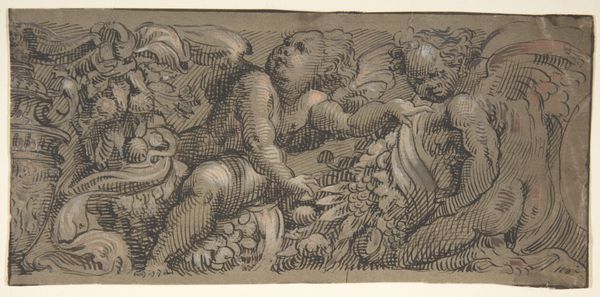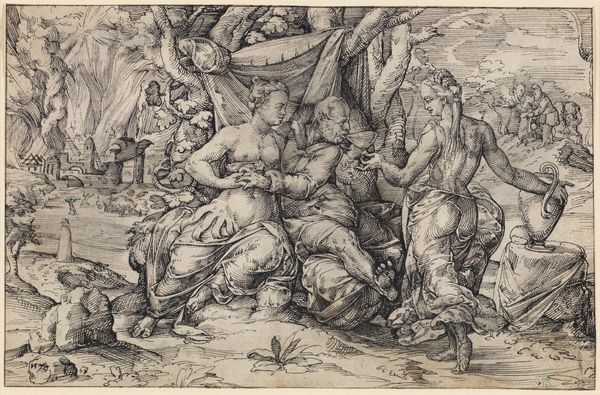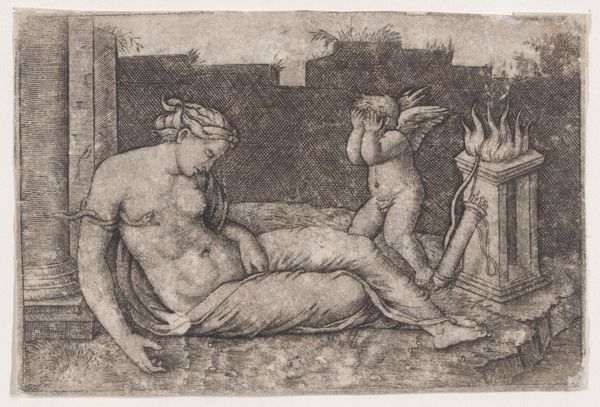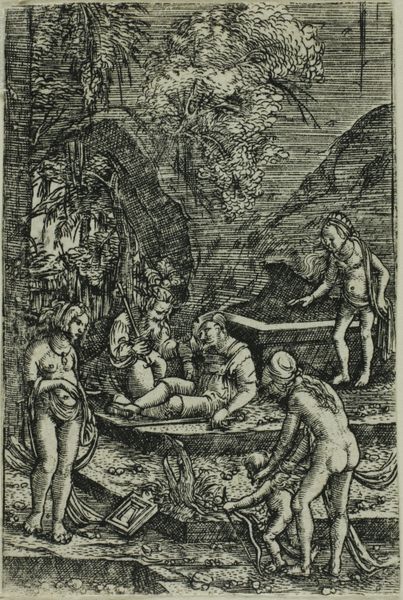
drawing, print, engraving
#
drawing
#
allegory
# print
#
figuration
#
11_renaissance
#
pencil drawing
#
northern-renaissance
#
nude
#
engraving
Dimensions: Sheet: 1 3/4 × 2 7/16 in. (4.4 × 6.2 cm)
Copyright: Public Domain
Editor: This engraving, "Der Welt Lauf (Sleeping Justice)," made between 1515 and 1571 by Barthel Beham, shows a nude figure in chains asleep alongside what looks like a child. It feels incredibly symbolic. How do you interpret this work, particularly concerning its social context? Curator: That's a fantastic starting point. Given Beham's radical politics and eventual banishment from Nuremberg, consider "Sleeping Justice" not just as allegory, but a pointed critique. Justice, traditionally a powerful, active force, is here vulnerable, bound, and unconscious. What power structures benefit from this dormancy, do you think? Editor: So, you see the chains as a metaphor for societal constraints rather than simply physical ones? Curator: Precisely. This piece was created during a time of immense social and religious upheaval. Who has historically been silenced or oppressed when justice is "asleep?" The marginalized, the poor, women... Justice, in this state, fails to protect those who need it most. Notice how the child clings to Justice – a symbol, perhaps, of innocence also at risk. Does the landscape behind them offer a clue about societal structures? Editor: The fortress! It reinforces that idea of established power and who benefits from the status quo, which includes the wealthy, men, and the aristocracy. Also the vulnerable lamb huddled up asleep. Does the dog hint at loyalty, the sheep hinting vulnerability. Curator: Precisely! And Beham's choice of engraving, a readily reproducible medium, suggests an intent to disseminate this message widely. By implicating these broader societal structures, Beham wasn't simply depicting a scene; he was advocating for awakening. How effective do you think an image like this would be at provoking action or dissent? Editor: Thinking about it now, this work definitely resonates in a contemporary context. I wonder if the image served as a protest call during its time and a reminder that social progress is often interrupted. Curator: Absolutely. Art acts as witness, challenging prevailing norms. By looking back, we are called to recognize and to disrupt the ongoing cycles of power and silence.
Comments
No comments
Be the first to comment and join the conversation on the ultimate creative platform.
